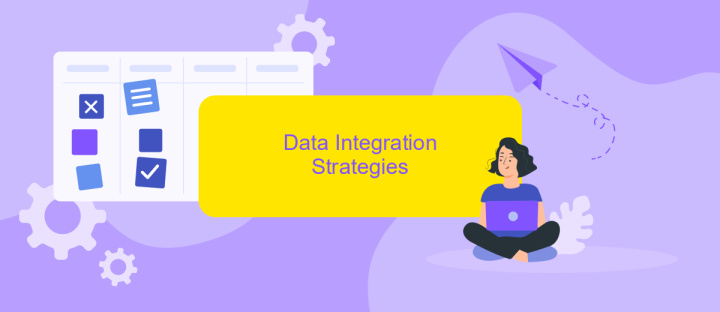Data Integration in the Life Sciences
Data integration in the life sciences is a critical process that combines diverse data sources to facilitate comprehensive analysis and discovery. By merging genomic, proteomic, clinical, and environmental data, researchers can uncover novel insights and accelerate advancements in medical research, drug development, and personalized medicine. Effective data integration enhances collaboration and drives innovation, ultimately improving health outcomes and scientific understanding.
Introduction
Data integration in the life sciences is a critical aspect for advancing research and development. It involves combining data from various sources to provide a unified view, facilitating more comprehensive analyses and insights. Effective data integration can lead to significant breakthroughs in understanding complex biological systems and improving healthcare outcomes.
- Combining heterogeneous data sources
- Ensuring data quality and consistency
- Enhancing data accessibility and usability
- Streamlining data workflows and processes
One of the tools that can significantly aid in data integration is ApiX-Drive. This service allows seamless integration of various data sources without the need for extensive coding knowledge. By automating data workflows and ensuring data consistency, ApiX-Drive helps researchers focus more on analysis rather than data management. As the life sciences field continues to generate massive amounts of data, efficient integration tools like ApiX-Drive are becoming increasingly essential.
Challenges in Life Sciences Data Integration

Integrating data in the life sciences sector presents numerous challenges, primarily due to the complexity and diversity of biological data. Various data formats, ranging from genomic sequences to clinical trial results, create significant hurdles in achieving seamless integration. Additionally, data quality and standardization issues often arise, as different research institutions and laboratories may use disparate methodologies and terminologies, complicating the process of harmonizing datasets.
Another critical challenge is ensuring the interoperability of data systems. Many life sciences organizations rely on legacy systems that are not designed to communicate with modern data platforms. This is where services like ApiX-Drive can be invaluable. ApiX-Drive facilitates the integration of various data sources by providing a user-friendly interface and robust API capabilities, allowing researchers to automate data workflows without extensive coding. However, even with such tools, ensuring data privacy and compliance with regulations like GDPR remains a significant concern, requiring meticulous planning and execution.
Data Integration Strategies

Effective data integration in the life sciences is crucial for harnessing the full potential of diverse data sources. Integrating data from various formats and systems can be challenging, but several strategies can streamline this process.
- ETL (Extract, Transform, Load): This traditional method involves extracting data from different sources, transforming it into a consistent format, and loading it into a target database.
- Data Virtualization: This approach allows users to access and query data in real-time without needing to move it to a central repository.
- API-Driven Integration: Tools like ApiX-Drive facilitate the seamless integration of various data sources through APIs, enabling automated data flows and reducing manual intervention.
- Master Data Management (MDM): MDM ensures that the core data is accurate and consistent across the organization, providing a single source of truth.
Choosing the right data integration strategy depends on the specific needs and infrastructure of the organization. Leveraging tools like ApiX-Drive can simplify the integration process, making it easier to manage and utilize data effectively. By implementing these strategies, life sciences organizations can improve data accessibility, enhance decision-making, and accelerate research outcomes.
Benefits of Data Integration in the Life Sciences

Data integration in the life sciences offers numerous advantages, enhancing the efficiency and accuracy of research and clinical practices. By consolidating diverse datasets, researchers can gain comprehensive insights that were previously unattainable, leading to more informed decision-making and accelerated discoveries.
One of the key benefits is the ability to streamline workflows. Integrating data from various sources eliminates the need for manual data entry and reduces the risk of errors. This not only saves time but also ensures that data is consistent and reliable across different platforms and studies.
- Enhanced data accuracy and consistency
- Streamlined workflows and reduced manual entry
- Accelerated research and discovery processes
- Improved collaboration among researchers
- Better regulatory compliance and data governance
Services like ApiX-Drive facilitate seamless data integration, allowing life sciences professionals to connect various applications and automate data transfers effortlessly. By leveraging such tools, organizations can focus more on their core research activities and less on data management challenges, ultimately driving innovation and improving patient outcomes.


Conclusion
In conclusion, data integration in the life sciences is a critical component for advancing research and improving healthcare outcomes. By effectively combining disparate data sources, researchers and practitioners can uncover new insights, streamline workflows, and enhance decision-making processes. The integration of data not only facilitates a more comprehensive understanding of biological systems but also accelerates the development of innovative treatments and therapies.
Tools like ApiX-Drive play a significant role in simplifying the data integration process. By offering robust and user-friendly solutions, ApiX-Drive enables seamless connectivity between various data sources and systems. This not only reduces the time and effort required for manual data handling but also ensures data accuracy and consistency. As the life sciences field continues to evolve, leveraging advanced integration services will be essential for maintaining the pace of discovery and delivering impactful results.
FAQ
What is data integration in the life sciences?
Why is data integration important in the life sciences?
What are the challenges of data integration in the life sciences?
How can automation help in data integration for the life sciences?
What are the best practices for successful data integration in the life sciences?
Routine tasks take a lot of time from employees? Do they burn out, do not have enough working day for the main duties and important things? Do you understand that the only way out of this situation in modern realities is automation? Try Apix-Drive for free and make sure that the online connector in 5 minutes of setting up integration will remove a significant part of the routine from your life and free up time for you and your employees.

